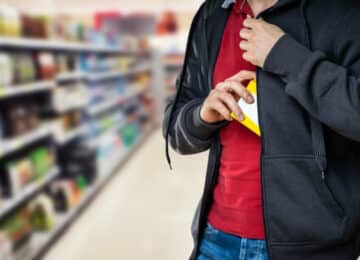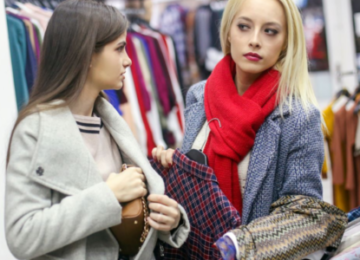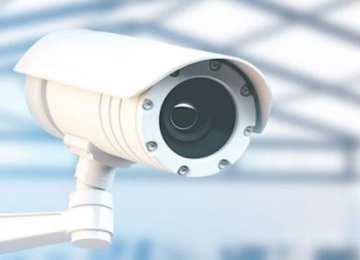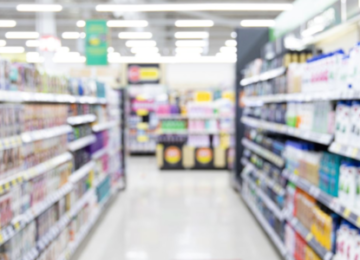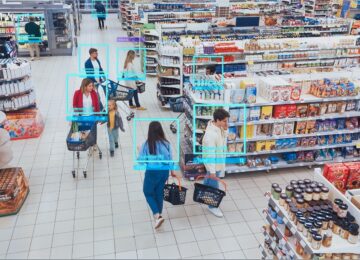Algorithm & AI video surveillance: how can you secure your business?
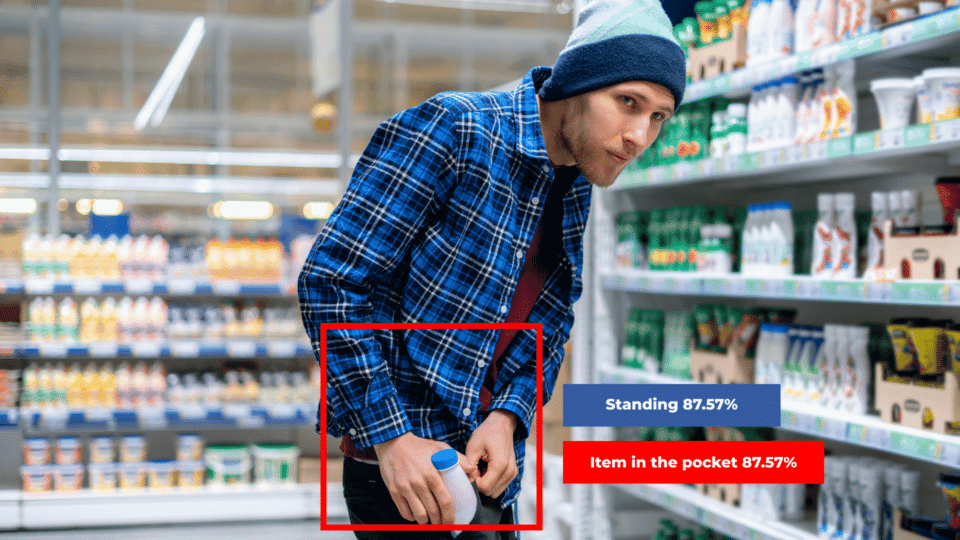
Retail is particularly affected by shoplifting. As security staff are not always sufficient to intercept suspicious individuals, algorithmic video surveillance is becoming a real asset in securing shops. But what does this solution involve, and how can it be applied to video protection systems?
Algorithm, AI, algorithmic video surveillance: a few definitions
Artificial intelligence is one of the constantly evolving fields of science. Insofar as it seeks to imitate human intelligence, it concerns various sectors of activity, including video surveillance.
Artificial intelligence and algorithms
Artificial intelligence refers to all types of simulation of human intelligence. These are computer programmes developed using different theories and techniques. AI has a wide range of applications, including intelligent personal assistants, chatbots, decision support, image recognition and home automation. AI is capable of solving complex problems, based in particular on algorithms.
In its original sense, an algorithm is a sequence of clearly defined and detailed operations used to solve a problem. It is also a computer-executable programme that uses a certain amount of data to accomplish a task.
To obtain these results, computer developers use a process called "machine learning". This involves providing the computer with a large amount of data in order to train it to recognise it and integrate it into its memory.
Definition of algorithmic video surveillance (AVS)
Algorithmic video surveillance is an application of artificial intelligence. This new technology involves coupling video surveillance with algorithms to improve its performance. The aim is to create autonomous programmes capable of detecting suspicious behaviour or shapes. Recognition systems that are particularly useful in the fight against shoplifting.
A problem common to all shops: the explosion in shoplifting
Shoplifting is not a new phenomenon. It is to guard against this scourge that several hundred thousand shops in France are equipped with surveillance cameras. Video surveillance systems are being installed in all sectors: pharmacies, grocery shops and other food shops, not forgetting hardware stores.
An increase due to inflation
Inflation seems to be largely responsible for the upsurge in shoplifting. The drop in purchasing power is thought to be prompting some people to take the plunge. New profiles have emerged. Even the most loyal customers can be tempted to shoplift, whatever their age.
Food sections particularly affected
According to reports in the press and other media, shoplifting affects foodstuffs in particular. Many shop managers install anti-theft devices on these products.
Online resale of stolen goods
Online reselling of stolen goods has also been reported. From smartphones to DIY items stolen from shops, there is no shortage of ideas. As buyers don't always think to ask for the original invoice, these stolen items are difficult to trace.
Monopolisation of security resources
The organisation of retail chains is suffering as a result of this upsurge in shoplifting. In addition to the loss of revenue, this scourge is forcing security staff to redouble their vigilance. They spend an enormous amount of time dealing with people they deem suspicious. Sometimes it's too late, other times it's a mistake and the person is ultimately blameless. Either way, it wastes the security guards' time.
Developments and trends in VSA
Algorithmic video surveillance is not a new application. It has been used for a number of years for facial recognition. But other uses have been developed, particularly in the field of security. Thanks to AI, it is now possible to use video surveillance cameras to protect against shoplifting, while respecting the privacy of customers.
Development for shop security
The developers focused their research on real-time analysis of images and videos recorded by surveillance cameras. This data is used to train the programme to detect suspicious gestures (machine learning). This data is used to create an algorithm capable of learning autonomously and analysing more complex data (deep learning) in order to improve its performance.
Veesion software is based on this algorithm. It is capable of detecting suspicious gestures or behaviour in a shop in real time, regardless of its size.
Technology that's easy to install
Veesion software can be installed on any type of video surveillance software kit and on cameras already in place in the shop. It connects to the video recorder and synchronises with the cameras. Note that one camera may be enough to install this AI in a shop.
Sending video alerts to smartphones or tablets
30 minutes after installing the software, the first alerts are sent if a suspicious gesture is detected. These notifications are short videos. They can be received in real time on smartphones or tablets.
A customisable tool
The Veesion software can be configured according to the needs of the shop, for example, depending on opening hours, staff numbers and the number of cameras. It can operate continuously, day and night. The return on investment of the tool can be measured using weekly and/or monthly reports. In particular, statistics can be kept on the number of people intercepted or the value of goods recovered.
Protection of sensitive data
The software secures the data it needs to collect, in compliance with French law and European regulations. Information relating to the shop and the personal data of employees and customers is protected. No data is passed on to a third party or monetised in any way whatsoever.
The benefits of in-store VSA
Previously, shoplifting mainly affected the alcohol, cosmetics, hygiene and even textiles departments. However, with the high inflation of recent months, shoplifting is on the increase in the food sector.
Shopkeepers are looking to improve the security of their shops with anti-theft devices and surveillance cameras. But they also need to recruit staff to monitor the camera screens. The human eye is not infallible. The advantages of algorithmic video surveillance can be highlighted here.
Continuous, real-time control of the video stream
The VSA analyses images and videos in real time, allowing immediate action to be taken. As soon as an anomaly is detected, i.e. suspicious behaviour, a video alert is sent to the person in charge of security. It is then possible to intervene before the individual leaves the shop. The individual is literally caught red-handed.
No more detection of suspicious gestures
Thanks to intelligent video surveillance images, shop security staff can detect more suspicious gestures. Abnormal behaviour can be difficult for the human eye to detect. What's more, some suspicious individuals and gestures can escape the vigilance of security staff, particularly at the end of their shift. With these new technologies capable of providing automated surveillance and continuous video analysis, security guards can rely on video alerts to decide to intervene if they deem it necessary.
Fewer false alarms
Algorithmic video surveillance reduces the number of false alarms, because it can distinguish a suspicious gesture from a harmless one. It focuses only on critical events. This prevents security staff from intercepting a customer who is simply shopping. What's more, video alerts give security guards the opportunity to decide whether or not to intervene. If the AI transmits a false alarm, it automatically learns from its mistakes.
Optimised security resources
Intelligent video surveillance can be set up to operate 24 hours a day, 7 days a week. There is no need for multiple security guards to monitor the various screens, entrances and exits. Video alerts give them greater availability. Security staff can be assigned to other shifts and/or other posts, making it easier to rotate them.
VSA challenges and concerns
Artificial intelligence associated with surveillance technologies intrigues and raises questions, particularly about its purposes. It can be criticised as unethical, intrusive on privacy and a threat to freedom. Does algorithmic video surveillance, with its thousands of cameras, threaten privacy? Are we moving towards widespread surveillance? Does the proliferation of cameras in public spaces lead to risks of error or algorithmic bias?
VSA and respect for privacy are not mutually exclusive
Veesion is committed to developing ethically responsible technology. The Veesion :
- is based solely on an individual's gestures, which give rise to suspicion, and never on facial recognition, biometric surveillance, emotions, gait or even clothing;
- cannot be used to track a customer or any other individual entering the shop;
- does not record the identity of an individual suspected of theft or apprehended after a shoplifting offence;
- is a decision-making aid: it is always a human being who decides whether or not to stop a suspect.
To ensure compliance with the law, we recommend that you consult the ICO (England) website. This independent administrative authority provides information on what needs to be done when installing cameras and processing the personal data collected by these cameras.
Real-time gesture analysis: a few examples
On what behaviours is the algorithm used by the AI in the video devices based? What kinds of gestures might be considered suspicious? Here is a non-exhaustive list of examples used to train the Veesion software:
- slipping an item of clothing into a garment ;
- concealing a product in the bottom of a pushchair;
- not scanning all the items at a self-checkout;
- opening the packaging of a product on the shelf;
- eating food in the shop.
Near-zero risk of error
Errors in interpreting gestures are minimal thanks to automatic learning and deep learning. The Veesion software has been trained on millions of examples of suspicious gestures. Its continuous autonomous learning makes it increasingly effective.
The most popular
Related news
Discover what Veesion can do for you. Do you have one or more stores?
Our team will contact you within 48 hours
